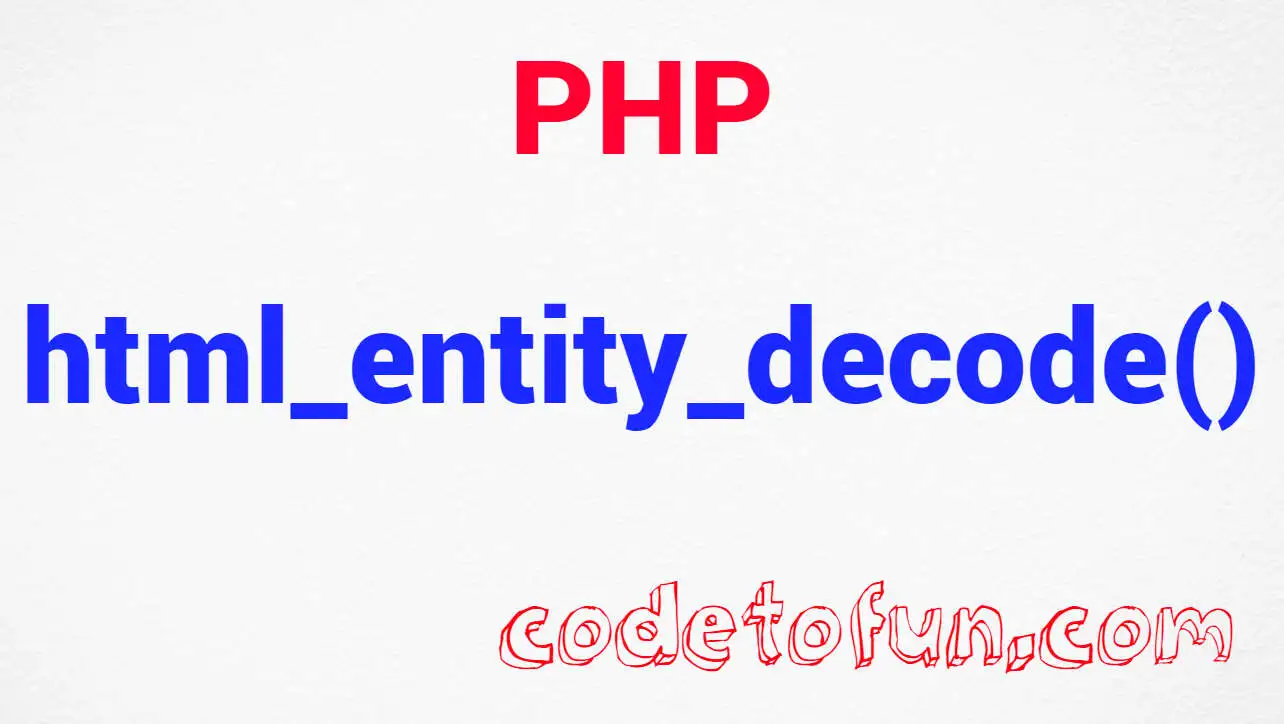
PHP Basic
- PHP Intro
- PHP Star Pattern
- PHP Number Pattern
- PHP Alphabet Pattern
- PHP String Functions
- PHP addcslashes()
- PHP addslashes()
- PHP bin2hex()
- PHP chop()
- PHP chr()
- PHP chunk_split()
- PHP convert_cyr_string()
- PHP convert_uudecode()
- PHP convert_uuencode()
- PHP count_chars()
- PHP crc32()
- PHP crypt()
- PHP explode()
- PHP fprintf()
- PHP get_html_translation_table()
- PHP hebrev()
- PHP hebrevc()
- PHP hex2bin()
- PHP html_entity_decode()
- PHP htmlentities()
- PHP htmlspecialchars_decode()
- PHP htmlspecialchars()
- PHP implode()
- PHP join()
PHP String join() Function

Photo Credit to CodeToFun
🙋 Introduction
In PHP, strings are a fundamental data type, and a variety of functions are available to manipulate and work with them.
The join() function, also known as implode(), is a versatile string function that joins the elements of an array into a single string.
In this tutorial, we'll explore the usage and functionality of the join() function in PHP.
💡 Syntax
The syntax for the join() function is as follows:
string join(string $separator, array $array);- $separator: The string that separates the array elements in the resulting string.
- $array: The array whose elements will be joined into a string.
📄 Example
Let's dive into an example to illustrate how the join() function works.
<?php
// Sample array
$array = array('apple', 'banana', 'orange');
// Join array elements with a comma separator
$result = join(', ', $array);
// Output the result
echo $result; // Output: apple, banana, orange
?>💻 Output
apple, banana, orange
🧠 How the Program Works
In this example, the join() function joins the elements of the array apple, banana, orange into a single string, separated by a comma and a space.
↩️ Return Value
The join() function returns a string that is the result of concatenating the array elements with the specified separator.
📚 Common Use Cases
The join() function is particularly useful when you need to create a string representation of an array for display or storage purposes. It simplifies the process of converting array elements into a well-formatted string.
📝 Notes
- The
join()function is an alias of the implode() function in PHP. You can use eitherjoin()or implode() interchangeably. - If the array is empty, the function returns an empty string.
🎢 Optimization
The join() function is optimized for efficiency. However, for very large arrays, consider concatenating the elements manually using a loop if performance is critical.
🎉 Conclusion
The join() function in PHP is a powerful tool for converting array elements into a string with a specified separator. Whether you're creating a comma-separated list or generating a formatted output, join() simplifies the process and enhances the readability of your code.
Feel free to experiment with different arrays and separators to explore the versatility of the join() function. Happy coding!
👨💻 Join our Community:
Author

For over eight years, I worked as a full-stack web developer. Now, I have chosen my profession as a full-time blogger at codetofun.com.
Buy me a coffee to make codetofun.com free for everyone.
Buy me a Coffee












If you have any doubts regarding this article (PHP String join() Function), please comment here. I will help you immediately.